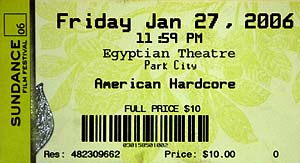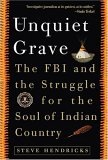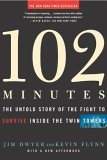[contentcards url=”https://itunes.apple.com/us/album/even-if-it-kills-me-10th-anniversary-edition/1295239458″]
Tag: 5 stars
-
Spelunky
[contentcards url=”http://www.spelunkyworld.com”]
http://www.spelunkyworld.com -
Review: All For a Few Perfect Waves
All for a Few Perfect Waves: The Audacious Life and Legend of Rebel Surfer Miki Dora, by David Rensin
Why did I never know about Miki Dora before? How nice to meet a brother on the path, even if I’m not a surfer. Check it out:
Dora played the game as only a natural can. Soul surfing— surfing for the sheer art and pleasure of it— was his church long before the term was coined, and his passion for worship was equaled only by his drive to create and sustain a lifestyle that gave him the liberty to live free to seek thrills, spontaneous adventure, waves, and wonder, wherever he could find them.
Dora was there surfing Malibu at the beginning. The beginning is always a good place to be, except that you get a front row seat at seeing the mainstream come in and ruin things. Greg Noll remembers:
The whole Hollywood bullshit deal just brought more assholes over the hill from the Valley. If you’re from the Valley, don’t take offense, but this is basically what the beach guys thought. When you watch Stacy Peralta’s documentary, Riding Giants, they ask the guys, “What did you think of the Hollywood movies and surf music?” Answer: It was just a bunch of shit. Take the movie Ride the Wild Surf; it shows Tab Hunter and his friends sitting in the water, not a hair out of place, water calmer than a fish pond, no surf in the background. Suddenly someone yells, “Surf’s up,” and they cut to the same guys riding twenty-foot waves. Man, who’s gonna belive that? It’s one of the biggest laughs in the movie.
I guess I should say this before quoting more: Miki Dora lived to surf. He never sold out. A true soul. In fact, he would be against this very book about his life, which was only published after his death.
I go into contests once or twice a year for the pleasure of shaking up the status quo…the more restrictive they can make a contest’s (rules), the less (the judges) have to think or know about what you’re accomplishing in the water; thus making an easy job easier at our expense. What do these people care about your subtle split-second maneuvers, years of perfecting your talents?
I can relate to that, though I cannot claim the purity of Dora’s complete devotion to his art. I’m also leaving out a big part of the book that details Dora’s exploits funding his lifestyle without holding down a job and spurning most of the income his fame could have brought in. Lots of scams ensue and everyone compares his life to the film Catch Me If You Can. But here’s a paragraph to end everything with and send you on with the rest of your boring life. It’s Dora:
My whole life is this escape; my whole life is this wave I drop into, set the whole thing up, pull off a bottom turn, pull up into it, and shoot for my life, going for broke man. And behind me all this shit goes over my back: the screaming parents, teachers, the police [laughs], priests, politicians, kneeboarders, windsurfers, they’re all going over the falls into the reef; headfirst into the motherf*cking reef, and BWAH! And I’m shooting for my life. And when it starts to close out I pull out and go down the back, and catch another wave, and do the same goddamned thing again.
Five stars.
-
Review: Roberts Ridge
Roberts Ridge: A Story of Courage and Sacrifice on Takur Ghar Mountain, Afghanistan
.
[rating:5/5]I’ve been spending a lot of time this week with the Navy SEALs in Afghanistan. This book by Malcom MacPherson, is another look at the events on Takur Ghar, where several special ops warfighters lost their lives to Taliban and/or al Qaeda fighters. I found it an interesting counterpoint to Naylor’s amazing book, Not a Good Day to Die: The Untold Story of Operation Anaconda
. Where Naylor quoted other operators critical of the SEALs that day, MacPherson’s book is told from the SEALs point of view. He doesn’t cover up their mistakes, but he doesn’t pile on.
Fifty feet above the ground, as soon as Calvert flared the Chinook, bullets crashed through the chin bubble. in the right seat, he watched as holes pinged through the windshield glass. Two bullets hit his helmet and jerked his head left, as if a hammer had slammed his skull. In the same spray of fire, he was shot eight times across his chest, one bullet lodging in the Kevlar armor while seven flecked off.
It’s a great tale of a tragic battle on the very top of a 10,240 foot mountain peak. One more intersting quote:
A former SEAL had joined SOAR for thrills, and if that didn’t say enough already, in one of his first training sessions he was taking off a Chinook and was powering through 150 feet when his instructor in the next seat leaned over and shut down both engines. The SEAL’s eyes widened and he screamed, “What the f*ck are you doing?” The instructor folded his hands as the bird autorotated in its powerless descent, hard to earth.
Roberts Ridge: A Story of Courage and Sacrifice on Takur Ghar Mountain, Afghanistan
.
[rating:5/5] -
Review: The Unquiet Grave
The Unquiet Grave, by Steve Hendricks.
[rating:5/5]This is a book I could not put down. The historic, though mostly unknown events on the Pine Ridge Reservation from the 1970s are so over-the-top that you have a hard time believing it all really happened. And it was only 30 years ago. American Indians (AIM) picked up guns and began to assert their rights. The FBI and other government agencies fought back, eventually all but destroying the American Indian Movement.
Hendricks illuminates these events for the battles they were, as he builds the case against the FBI and the Establishment’s COINTELPRO response to what started out as simple activism. Hendricks makes the case that the FBI’s actions to undermine the American Indian Movement pretty much caused the situation to blow up into horrific violence carried out on all sides. Just like a fearful government undermined Marcus Garvey, Martin Luther King, the Black Panthers, etc. You are left wondering what history would have been like if J. Edgar Hoover hadn’t been such a prick.
As the story goes from shootout to shootout, murder to murder, trial to trial, Hendricks peels layers and layers from each story in a grasp for the truth underneath. Many times, after hearing all the conflicting witness accounts to an event, we are left to wonder what really happened and which side had the worst set of bad guys (it seems that everyone was shady and that there weren’t many good guys on either side of the fight).
You can’t help but get caught up in the gossip, the theories of who killed who, the bumbling of the FBI and the judicial system. And you can’t believe how crazy the whole situation is.
I normally quote a few short passages from books, but here’s one longer excerpt from The Unquiet Grave:
The goons gave chase. When DeSersa noticed them in his rearview mirror, he flattened the accelerator of his Grand Prix until he was driving eighty-five or ninety miles an hour, but his lead nonetheless melted steadily. at an S-curve a mile out of Wanblee, his transmission jammed in fourth gear, and by the time he got it unstalled, the first goon car, a large black sedan, had pulled alongside him.
“Get down!” someone in DeSersa’s car shouted.
An instant later a gun roared from the black sedan. Three or four more shots followed in quick succession, and glass and metal exploded throughout the cabin of the Grand Prix. A cloud of smoke and debris swirled around everything.
“Oh Christ, man, I’m hit!” DeSersa screamed. “I’m hit bad!”
George Bettelyoun, sitting behind DeSersa, told him to stop the car.
“I can’t,” DeSersa said. He was in tears. “I’m hit bad.”
Lester Jack, sitting in the front passenger seat, urged DeSersa not to loser control, and this much DeSersa was able to do for his passengers. He kept the Grand Prix in its lane until it slowed of its own accord and coasted into the roadside ditch.
George Bettelyoun later said, “The black car that shot us up went past us and stopped. I was thinking they were going to come back and start shooting again. The other guys in our car, they got out and started running up the bank on the side of the road. I tried to get Byron out, but he said, ‘I can’t move. My leg-.’ So I looked over the seat, and his leg was almost blew off. There was a hole in there right through the center. So I said, ‘Get out. They’re gonna kill you.’ I knew they weren’t shooting the play around after I seen that hole in his leg. So he crawled across the seat and got out the door, and I tried to help him up that bank. But he couldn’t make it. He said, ‘Go on.’ So I just took off. It was all open country there. There’s no cover whatsoever, just a fence line that the weeds are piled up on.
The Unquiet Grave, by Steve Hendricks.
[rating:5/5] -
Review: While Europe Slept
While Europe Slept: How Radical Islam is Destroying the West from Within, by Bruce Bawer.
[rating:5/5]Bawer describes fast-growing Muslim communities throughout Europe that are basically isolated and closed off from European society. Muslims in France, Denmark, the Netherlands, haven’t been integrated into the countries they’ve emigrated into. They live in ghettos that are often beyond the control of local authorities. And they bring with them cultural norms from their old countries, like the lack of rights for women and honor killings, which violate the law of their adopted West European countries:
In London in 2003, a lively sixteen-year-old London girl named Heshu Yones- who’d fallen in love with a Lebanese Christian boy and planned to run away with him- was stabbed eleven times by her father, who then slit her throat. In a farewell note to her father, Heshu referred to the frequent beatings he’d given her:
Bye Dad, sorry I was so much trouble.
Me and you will probably never understand each other, but I’m sorry I wasn’t what you wanted, but there’s some things you can’t change.
Hey, for an older man you have a good strong punch and kick.
I hope you enjoyed testing your strength on me, it was fun being on the receiving end.
Well done.The book definitely walks a fine line of being labeled a paranoid right-wing screed against foreigners invading these long-white countries. In many similar situations, people pointing out these kinds of situations and statistics have been labeled racist. The fact that Bawer is a gay man sometimes makes it seem okay, and sometimes you’re left wondering if you should be agreeing with his points.
Bawer details of the use of the host country’s welfare system by those looking to bring down the very western society that is supporting them:
After the 2005 terrorist attacks on London, it emerged that the four suspects had raked in more than half a million pounds in welfare benefits from the British government. The Telegraph reported, too, that Hizb ut-Tahrir founder Omar Bakri Muhammed (who preached that “we will conquer the White House… we will be in charge and Muslims will control the earth”) was getting “£331.28 a month in incapacity benefit and £183.30 a month in disability living allowance”; in addition, he collected a “housing benefit” and a “council tax benefit,” not to mention his wife’s welfare intake of “at least £1,300 a month.” (Curiously, no mention was made of child benefits for his seven progeny.) Even his car had been acquired free of charge under a government program.
Bawer talks of the European way of dealing with its growing Muslim population- appeasement:
“Muslims have a dream of living in an Islamic society,” declared a Danish Muslim leader in 2000. “This dream will surely be fulfilled in Denmark… We will eventually be a majority.” A T-shirt popular among young Muslims in Stockholm reads: “2030- when we take over.” In many places in Europe, agitation for the transfer of sovereignty has already begun. In France, a public official met with an imam at the edge of Roubaix’s Muslim district out of respect for his declaration of the neighborhood as Islamic territory to which she had no right of access. In Britain, imams have pressed the government to officially designate certain areas of Bradford as being under Muslim, not British law. In Denmark, Muslim leaders have sought the same kind of control over parts of Copenhagen. And in Belgium, Muslims living in the Brussels neighborhood of Sint-Jans-Molenbeek already view it not as part of Belgium but as an area under Islamic jurisdiction in which Belgians are not welcome.
And as the United States wages a war on terrorism, European distrust of US intentions leads them to often, in Bawer’s words, side with the terrorists:
Jordan wanted Mullah Krekar on drug-smuggling charges ( a year later, he and fourteen others were charged by Jordan with planning terrorist acts against United States and Israeli targets), and U.S. officials wanted to talk to him too. But the Dutch, frowning alike on Jordan’s indelicate treatment of suspected terrorists and on America’s death penalty, would not extradite him. Instead, they held him until January, then put him on a plane to Norway on the understanding that he would be arrested at the airport in Oslo. But Norwegian authorities- who shared their Dutch colleagues’ unwillingness to hand him over to either Jordan or the United States- allowed Krekar to walk free.
Coming in for some serious criticism from Bawer is France, who he repeatedly mentions had business dealings with Saddam Hussein’s government before the US removed him from power:
One might have thought this kidnapping would help Frenchmen see that all Western democracies were in this together; instead, the French government strove to get the message through to the hostage takers that in the war between Islamism and America, France was on the Islamists’ side. Le Monde applauded this spineless tactic. While pointing out thtat no democracy- not even France- was safe in the holy war that had begun on 9/11, the newspaper’s editors went on to celebrate (in typically frlowery French-editorial prose) the fact that the hostage taking, instead of exacerbating tensions between French Muslims and non-Muslims, had instead “caused of movement of national communion, almost of sacramental union.” Why? Because French Muslim leaders (who, practically speaking, could hardly have done otherwise) had unanimously denounced the nabbing of Malbrunot and Chesnot, expressed their loyalty to France, and sent envoys to Baghdad to help free the journalists. That’s it: all it takes for the French intelligentsia to wax poetic about “sacramental union” and about “the Muslims of France” being “the first in line to defend the Republic” is for French Islamic leaders to be willing to dissociate themselves from a patently barbaric act.
Looking to the future:
Over dinner, in response to Hedegaard’s dark view of Denmark’s future, Brix was more hopeful. The media would eventually come around; crisis would be averted. “You ahve to be a little patient,” she said. Not until the Eiffel Tower and the Tivoli in Copenhagen were blown up, she said, would the elite get it. hedegaard agreed. But then again, he said, the destruction of those landmarksmight have exactly the opposite result- the media might simply intensify its perverse cries of “Why do they hate us so much? What have we done to deserve this hatred?” the Wester European attitude, he observed, is that “of a repentant criminal”: too many Europeans are simply too willing to compromise their freedom. He mentioned a Danish firm with which he was familiar. It had recently taken on some new Muslim employees, and one of the longtime workers there had asked, in all seriousness: “When the Muslims start working here, can we still wear shorts in the summer?” Such readiness to adjust to Islamic norms- an attribute rooted in the fact that the reigning social ideal was not liberty but compromise- did not bode well for Denmark’s future.
One more, somewhat unrelated quote:
Jose’s language skills were in his blood. His father had been a journalist under Batista. When Castro and Guevara came to power, they arrested Jose’s father, tortured him, and put his eyes out. On the day I met him, in his modest ground-floor apartment, he sat in an upholstered chair in a book-lined room and spoke to me with a courtliness and respect to which I was not accustomed. Ever since then, every time I’ve seen a Che T-shirt on some clueless young person, I’ve thought of Jose’s father sitting in his living room, surrounded by books he could no longer read.
While Europe Slept: How Radical Islam is Destroying the West from Within, by Bruce Bawer.
[rating:5/5] -
Review: Phaic Tan

The Jetlag travel guide to Phaic Tan: Sunstroke on a Shoestring.
This is the second Jetlag travel guide, coming on the heels of last year’s spot-on paradoy of an Eastern Europe guidebook: Molvania (link below).
If you’ve ever read a travel guide in anticipation for a trip, you’ll appreciate the humor and the level of detail in the Jetlag books. Why hadn’t someone thought of this before? Check it:
Many western visitors to Phaic Tan are terrified of the possibility that they may— even accidentally —end up eating dog. A good test when served any roast meat is to look closely at the animal’s head. While pigs and goats will traditionally have an apple stuffed in their mouth, dogs tend to be cooked holding a tennis ball.
Phaic Tan is all about a fictional country that is quite obviously a mix of Thailand, Cambodia, and Vietnam. Among the sights along Thong On’s “Mildew Coast”, one can “settle back in a lazy deck chair under a shady coconut palm and, on any given day, take in the sight of an overloaded passenger ferry slowly sinking in the glittering azure sea.”
Can’t really say enough about these books, and I can’t wait for the upcoming titles in the series. I mean, they actually came up with the phrase “after his former career as a Khmer Rouge Information Officer.” Check this:
If you think Phaic Tan’s heat and humidity are hard to take now, spare a thought for those who lived back before the arrival of electric cooling. In those days rooms were kept ventilated with a ceiling fan pulled by a young servant boy (mataak) who customarily sat outside. With the coming of electricity in the 1920s this system was modified; the young servant boy still sat outside pulling the fan but he had a wire cable attached to one toe and was given a jolt if he slowed down.
Phaic Tan, by Santo Cilauro, Tom Gleisner, and Rob Sitch, A.
And don’t forget:
-
Review: 102 Minutes
102 Minutes: The Untold Story of the Fight to Survive Inside the Twin Towers, by Jim Dwyer and Kevin Flynn.
This book is a meticulous account of what happened inside the World Trade Center from the time the first plane struck until the second tower collapsed, 102 minutes later. From the authors’ note:
Like the passengers on the unsinkable Titanic, many of the individuals inside the World Trade Center simply did not have the means to escape towers that were promised not to sink, even if struck by airplanes. In the struggle to live, those who survived and those who did not sent out hundreds of messages. They gave us the history of those 102 minutes.
The level of detail holds your attention, and even though you know how the story ends, the writing invests you in the final fate of a variety of characters: firemen, businesspeople, and even the lowly security guard who stays at his post on an upper floor helping people evacuate. This book brings the horror home:
They peered out. Debris had rained onto the plaza— steel and concrete and fragments of offices and glass. Above them, they could see the east side of the north tower, and also its northern face. Instead of the waffle gridding of the building’s face, they now saw a wall of fire spread across ten or fifteen floors. Then they saw the people coming out the windows, driven toward air, and into air. The plane had struck not two minutes earlier.The authors of this book are reporters for the New York Times who had previously covered the 1993 bombing attempt. As they recount the final moments of the Twin Towers, they also shine light on the various ways the towers were built on the cheap, with safety features being removed in the name of more rentable space. Also interesting is the NYFD response, and how inter-agency fueds may have contributed to the high death toll among firefighters.
This book puts you into the buildings, and with each turning page you are frantic, knowing the end is closing in:
The word to leave finally got to Steve Modica, the aide to fire chief Paolillo, who had watched, uncomprehending, as police officers pounded down the stairs at the 30th floor. A fire captain, coming down after the police officers shouted at him.
“Evacuate! Evacuate! I want everyone to evacuate the building.” Then the captain continued down. Modica tried to reach Chief Paolillo, but couldn’t raise him. He switched to all three channels used by the department. He still could not get anything. He considered the circumstances, and would recall thinking: “We were doing nothing. Nothing. What’s the plan? Nobody had a plan.” He started down the stairs.
102 Minutes, A.
-
Review: At the Mercy of the River
An Exploration of the Last African Wilderness, by Peter Stark, Grade: A
Peter Stark’s account of a trip kayaking down Mozambique’s Lugenda River is an amazing tale. The previously uncharted 750-kilometer route is filled with rapids, waterfalls, crocodiles, hippos. And throughout the river adventure, he recounts the tales of historic explorers and wanderers throughout history. “Why are humans compelled to explore?” he wonders.
As I was raised on the European version of world events, it’s always fun to find yourself seeing the other side of the story. Hearing about Stanley and other explorers as a child, watching cartoons, Tarzan movies, and reading Edgar Rice Burroughs, I always thought that the Africans and their menagerie of beasts were the most dangerous things to encounter in Africa. Now that I’m older and have learned more, the most deadly thing to meet up with in Africa was probably the European unless you had a load of gold, rubber, or diamonds to give to them.
Stark recounts from da Gama’s visit:
The local king offered da Gama a ransom of gold plus the delivery of the Muslims whom he alleged were responsible for the grievously mistaken attack on the Portuguese trading post. Da Gama would have none of it. Instead, he captured eight or ten trading vessels coming into Calicut that did not realize the Portuguese fleet was anchored there; ordered his men to chop off the hands, ears, and noses of their crews; and sent the body parts in a boat to the King of Calicut, telling him to make a curry of the cargo. Da Gama had the still-living handless, noseless, and earless victims bound by their feet and their teeth knocked down their throats so they couldn’t untie the knots with their mouths; he had them piled in another boat, set it afire, and sent it ashore, too. When three members of one late-arriving Muslim crew pleaded that they wished to convert to Christianity before they were killed, da Gama showed them the mercy of having them baptized and strangled before they were hauled aloft and shot full of arrows like their fellow crewmen. Finally, the King of Calicut sent a large fleet against the Portuguese. Da Gama’s artillery blew that to splinters, too.
“No wonder the people we had just passed fled into the trees.
There is also in this book a great pair of river guides who embody every white South African macho archetype. These two are the only ones with the knowledge, skill, and physical ability to make the trip a success, and the author’s attempts to reconcile his own personality to theirs is well written with honesty and candor. His attempts to spend more time with actual Africans that they pass on the river is usually met with derision by the others in the group, who see little to learn from the locals and their often primitive ways.
Stark:
“We don’t have a word in our language for ‘wilderness,’” a native Mozambican villager would later tell me. “What you might call ‘wilderness’ we call ‘the place where no one lives and you are free to gather things.’”
What more can I say? Great book, A.
-
Review: Night
Night, Elie Wiesel, Grade: A
“If in my lifetime I was to write only one book, this would be the one.”
This new translation of Wiesel’s Night is a masterpiece in 120 pages. I know my holocaust books, and this is one of the most chilling I’ve read. This story of the young Elie being taken from a Hungarian ghetto to Auschwitz and Buchenwald is full of despair and horror. And as events unfold, unspeakable events, Wiesel recounts the death of his faith in the God he was raised to believe in.
I’ve been to Buchenwald and Auschwitz. There is a feeling there that cannot be described in words. The rare book like Night imparts a little of it, just enough to break your heart.
Remind me to send this book to the guy who made sure to tell me that Jews owned Werther’s Toffee company. He needs to read it and suck on some hard candy.
-
State of War
State of War: The Secret History of the C.I.A. and the Bush Administration, by James Risen, Grade: A
Written by the Pulitzer Prize-winning reporter who broke the Bush domestic spying scandal, this book is amazing. Filled with secret details about the mismanagment of the war on terror, the distraction of Iraq, the complete lack of WMD intel. Wow, this is how we’re going to look back on this era of American history, provided we open our eyes. Read it.
One thought has come to mind as to why the Bush administration refuses to go through the FISA courts. I wonder if they are monitoring way too many communications to get a warrant for every call/e-mail collected by NSA computers. Can’t wait to see what this is all about, once the secrets come out.
-

American Hardcore – Review

American Hardcore, A for fans, B for anyone else.
Thanks to Grayson, I ended up with two tickets to a showing of the punk documentary American Hardcore at the Sundance Film Festival. The film re-lives the eruption of the often brutal underground scene from 1980-1986.
From the start of the film, when the frantic Bad Brains track “Pay to Cum” is blasting away, it was striking. Hearing that music in a movie theater, or anywhere out in public, was a completely novel experience.
American Hardcore follows the growth of the hardcore scene with a spotlight on bands in LA like Black Flag and Washington, DC’s Minor Threat and especially the Bad Brains.
The movie starts brilliantly, contrasting the feeling of the times- the saccharine 80’s, Ronald Reagan as president, skinny ties- with the alienation so easy to feel in such a conformist era. The political similarities to today were amazing, and in fact it’s scary how today it’s so much worse. I remember wearing an anti-Ronald Reagan button around in high school. Today it feels almost illegal to make the same statement against Bush. Maybe that’s just the mood in Utah, but I doubt it.
So they mix all these clips of the fine and dandy 80’s with interviews with Vic Bondi and Keith Harris who have so many great lines about rebelling and the need to be different. The need to scream at the rest of society. It’s a great entrance to the film.
A bunch of other bands are featured as the movie hops from one thought to the next. Bands that quickly appear and vanish include MDC, DOA, Zero Boys, 7 Seconds, Agnostic Front, and a bunch more. At some points, it feels like they’re just cramming people in, as many as they can. And since this film is twenty years late, and there are so many bands worth mentioning, that’s exactly the idea. Not like there will be another in depth movie about 80’s hardcore.
The film doesn’t really explain how amazing the growth of the scene, across the United States, really was. There wasn’t any MySpace for bands to promote themselves and their shows. Hell, there wasn’t any Internet at all, let alone cel phones. Too bad the film didn’t spend more time on fanzines and other people who documented the scene. The only two ways to keep up on things were going to shows and reading cheaply-made fanzines, often xeroxed illicitly at someone’s parent’s business office.
There is one glaring hole in the movie. Almost no mention about San Francisco’s Dead Kennedys. The DKs were a huge band from that time. They put on an amazing show. But the recent history of the band has been very ugly, including a court case where control of the band’s recordings was taken from Jello and given to the other band members. After the film, during a Q&A, the film-makers basically said that Jello wasn’t talking and getting rights to the DK music was way too difficult. So leave it to the DKs to tell their own story. It will never happen.
The cut we saw clocked in at 98 minutes. And after an hour or so it started to drag. There are some segments that just don’t fit. Like, who ever liked the band Flipper and why are they in this movie? The film-makers say they left out the Misfits because they weren’t a real hardcore band. Okay, then take out Flipper. And that horrible Nig Heist segment is just stupid.
A short segment on gangs in the punk scene goes nowhere as well. It comes and goes so quickly that you just get confused.
As the scene klunks along into the mid-80’s, the film claims to record the death of the scene. Their position is that the scene just burned out and was over by 1986. Bad Brains had stopped playing hardcore in favor of reggae. And clips of Black Flag in their awful metal stage seem to offer proof that things were over. But the film misses the point.
I came into the scene around 1985. The fact is that the scene didn’t die. The legendary bands that were going strong in 1983, like Circle Jerks, Black Flag, Dead Kennedys, Minor Threat, and Bad Brains, were all pretty much broken up or past their prime by 1985. They had made their amazing contributions and were done.
Let’s face it, you can’t blame them. How much longer could they go on making no money, touring in broken-down vans, sleeping on the floors of fans. It was a hard life.
But the scene lived on and evolved after these original hardcore bands died out. Bands like RKL, SNFU, Ill Repute, picked up the flag and ran with it. I could name a hundred more. It was crazy how many good bands would play a single show at the Farm, the On Broadway, even Ruthie’s Inn.
The point is, the scene evolved. And it’s easy for it to leave you behind as new kids flood into the scene and write music that comes out of their lives.Throughout the film, I thought to myself that this is finally the movie that explains how I feel, where I come from. The way these bands were just exploding with energy, how everything was built from the ground up with an amazing passion. That’s how I’ve tried to live and create. But the film encompasses so many bands and so many people that I could hardly claim these feelings as mine alone.






